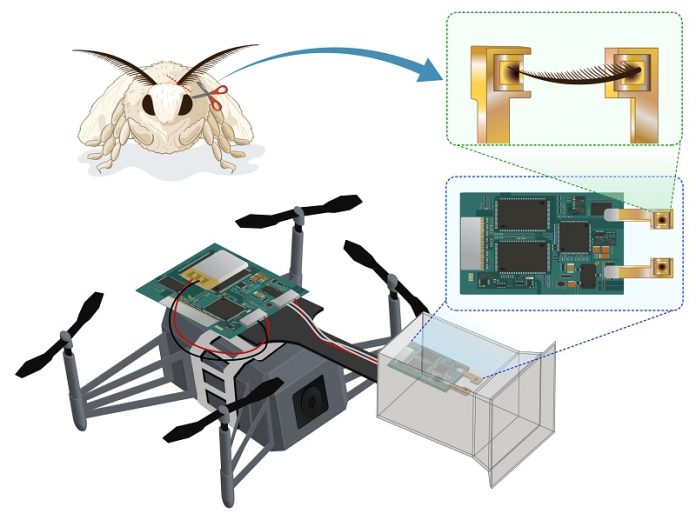
Drones are widely used for navigation, gas detection, imaging, and disaster response.
However, traditional drones rely on visual sensors like thermal cameras and LiDAR, which can be affected by low light, dust, and moisture.
To overcome these challenges, researchers in Japan have developed a new type of drone that uses silkworm moth antennae to detect smells, just like insects do in nature.
Animals, especially insects like moths, rely on their sense of smell to find food, avoid danger, and locate mates. Male silkworm moths, for example, can detect pheromones from several kilometers away.
Inspired by this natural ability, a team of researchers from Shinshu University and Chiba University created a bio-hybrid drone that combines robotics with the powerful scent detection of moth antennae.
Led by Associate Professor Daigo Terutsuki, the researchers developed this innovative drone by attaching moth antennae to an electroantennography (EAG) sensor. This sensor detects electrical signals from the antennae when they come into contact with specific odors, allowing the drone to track smells with high precision.
The team improved upon an earlier version of their bio-hybrid drone, which had a detection range of less than two meters. To enhance its accuracy and range, they introduced a “stepped rotation algorithm,” mimicking how insects pause while tracking odors to refine their search.
They also redesigned the sensor electrodes and used a special enclosure to reduce airflow resistance and minimize interference from static electricity. These improvements allowed the drone to detect smells up to five meters away.
The researchers tested their drone by tracking the pheromone plume of female silkworm moths. The drone successfully followed the scent over a five-meter distance, proving its effectiveness in real-world conditions.
This breakthrough technology has the potential to transform many industries. The odor-tracking drone could be used to detect gas leaks in critical infrastructure, identify fire hazards, and enhance security at airports by spotting dangerous substances like drugs and explosives.
Most importantly, it could play a crucial role in disaster response, helping rescue teams locate survivors trapped in debris after earthquakes or other natural disasters.
“Traditional search-and-rescue efforts depend on visual searches, which can be slow and inefficient,” explained Dr. Terutsuki. “Our bio-hybrid drone has the potential to revolutionize rescue operations by allowing responders to track human odors quickly, increasing the chances of saving lives.”
The study was published in npj Robotics, and the research team hopes their work will inspire further advancements in bio-hybrid technology, making drones more effective in challenging environments.
By harnessing nature’s best sensory abilities, scientists are pushing the boundaries of what drones can achieve.



